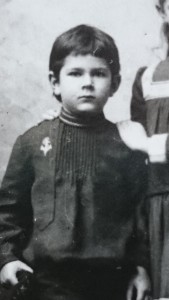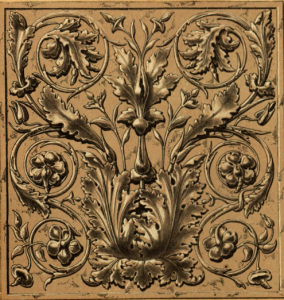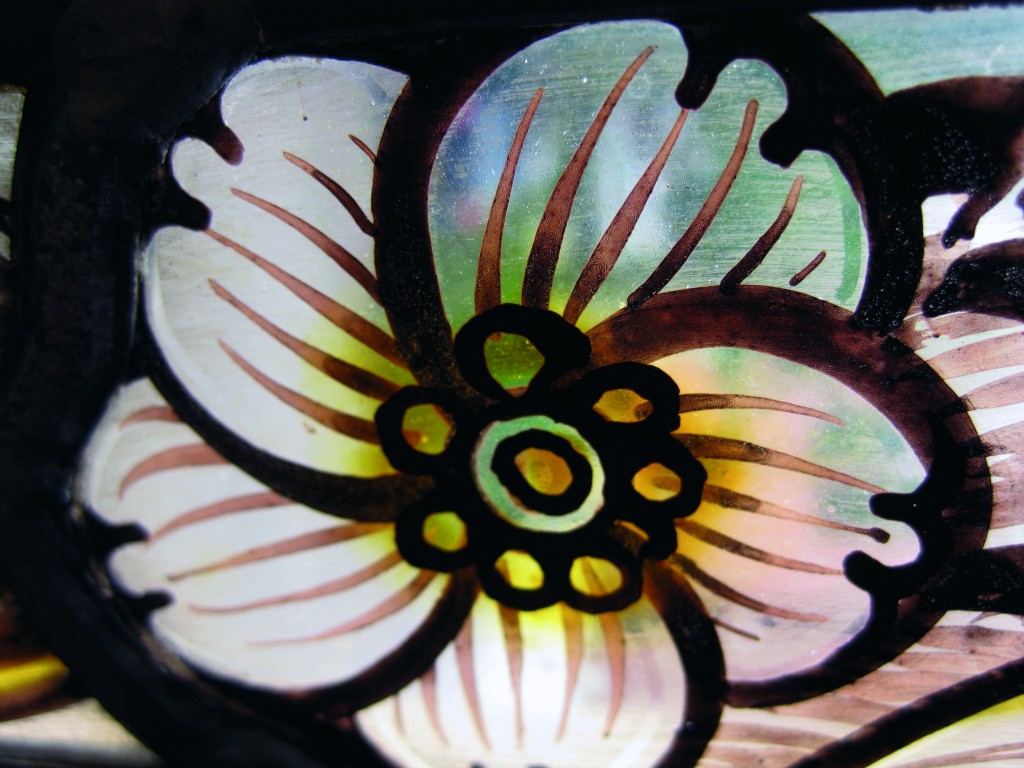TU Delft is nowadays known as a hub of technical innovation but at the turn of the 20th century it was the hub of artistic creativity. Known in those days as the Delft Polytechnic School, it was similar to a modern-day high school or college of architecture and crafts, rather than as the technically-focused school we know polytechnics to be today. It was here that Herman Rosse would receive a specialized higher education and begin to form professional connections to passionate artists who would shape the Dutch design of the Peace Palace. But what exactly is this style of design and how did Herman find his way onto this project? His creative spark began many years earlier.
Formative Years
Born in The Hague in 1887 to Carl Rosse and Jacoba de Haan, Herman was enveloped by art from an early age. His Polish father met his mother while they were studying together in Paris and would later became a decorator. His mother was a painter of some distinction and the family was connected to a wider network of Hague artists. Unfortunately, Herman’s family life was upset very shortly after he was born when his parents separated. However, his mother remarried soon afterwards to another decorator, Eliza van Rij, and so Herman was surrounded by creative minds in his upbringing by both his natural- and step-parents.
Scholar in Ornamentation
Herman formalized his interest in art by enrolling in the Academy of Art in The Hague and then afterwards studied at the Polytechnic School. It was here that he began studying Architecture and learned about Ornamentation – the way you embellished a building following specific rules and traditions. The favoured style of the Delft School was the 17th century Dutch Renaissance; it was seen as the most pure era in Dutch art history and harked back to The Netherlands’ glory days.
The school was more than just a centre for education, it was the epicentre of the Delft branch of Art Nouveau. Although Art Deco was on the rise, Art Nouveau was still a relatively popular art trend throughout the whole of Europe at that time. Similar to the Arts and Crafts movement, the Dutch version of Art Nouveau was a reaction to 19th century art and strove to bring back natural beauty to people’s homes via ornamentation. They modernised their designs by drawing inspiration from nature and approaching it almost like mathematical, geometric forms, making nature almost unreal. Many of the artists who worked on the Peace Palace came from this school and so the building’s style came largely from this local branch of Art Nouveau. Because his teachers were convinced that organic forms such as flowers and plants share the geometric basis with all ornaments, Herman became especially educated in this stylized, “unreal” representation of flora and fauna. They would become a great part of his work at the Peace Palace due to his teacher Karel Sluyterman.
Sluyterman was a senior lecturer in ‘Decorative Art and Ornament Studies’ and taught more traditional types of arts and crafts. Books of well-known English Arts & Craft designers, but also books such as The Grammar of Ornament (1856) by Owen Jones were a classroom staple. This book held a selection of design styles used throughout the ages from the Classics up until the Elizabethan era. Many artists used this influential book as their source of inspiration and reference to apply styles in the correct manner and Herman also used elements of this book – especially the Renaissance style – as inspiration when designing the interiors of the Peace Palace.
Building a Professional Network
The Polytechnic School in Delft was not only important for helping Herman to develop his artistic style – it was a real melting-pot of creativity and a source of many artistic social connections. Like his pupil Herman, Karel Sluyterman would later contribute to the designing of the Peace Palace by decorating the ceiling of the Great Hall of Justice and the school united many of the designers who would go on to work on this building. Alongside Sluyterman, a fellow teacher, Adolf Le Comte, was a lead designer of the main stained glass windows of the Palace, and Le Comte’s pupil Leon Senf was in charge of the tiles in the Small Courtroom’s antechamber. So many artists were linked to this school that Herman’s personal network flourished.
The Palace was ultimately designed with universal themes in mind, but the choice of having designers who came mostly from The Hague or the surrounding area led to the Peace Palace having a distinctly Dutch design! Universal and local styles came together to form the design of the Peace Palace interiors as we know them today.
Would you like to learn more about the interior design of the Peace Palace? A special magazine about Herman Rosse and his decorations is available in our webshop and in our Visitors Centre.


